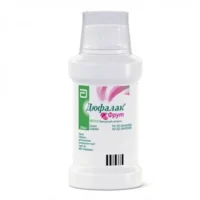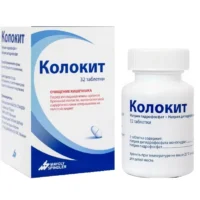Description
Dufalak (Lactulose) Syrup 200 ml
Ingredients
Active ingredient: Lactulose
Mechanism of Action
Lactulose, a synthetic disaccharide, is not absorbed in the small intestine but is metabolized by colonic bacteria into short-chain fatty acids. These acids lower colonic pH, promoting water retention and softening of stool, aiding in the treatment of constipation.
Pharmacological Properties
Lactulose acts as an osmotic laxative by increasing stool frequency and improving consistency. In hepatic encephalopathy, it reduces ammonia levels in the gut, enhancing mental function in liver disease patients.
Indications for Use
Dufalak syrup is indicated for the treatment of constipation and hepatic encephalopathy.
Contraindications
Avoid Dufalak if allergic to lactulose or with galactosemia to prevent adverse reactions.
Side Effects
Common side effects may include bloating or flatulence. Ensure adequate fluid intake to prevent dehydration.
Usage Instructions
Take Dufalak orally, with or without food. Shake the bottle well before each use. The usual adult dosage is 15-30 ml daily, adjusted based on individual response.
Benefits Compared to Analogues
Dufalak provides effective relief for constipation and hepatic encephalopathy due to its unique mechanism of action and proven clinical efficacy.
Suitable Patient Groups
Dufalak is suitable for adults, including the elderly, and children under medical supervision.
Storage and Shelf Life
Store Dufalak at room temperature away from moisture and heat. Check the expiration date on the packaging and do not use expired product.
Packaging Description
Dufalak is available in a 200 ml syrup bottle with detailed instructions for use.
Scientific Evidence
Lactulose’s efficacy in treating constipation and hepatic encephalopathy is supported by clinical studies. It increases stool frequency and consistency in chronic constipation and reduces ammonia levels, improving mental function in hepatic encephalopathy.
Additional Information
Before using Dufalak, consult your healthcare provider about existing medical conditions and medications to prevent potential drug interactions.





